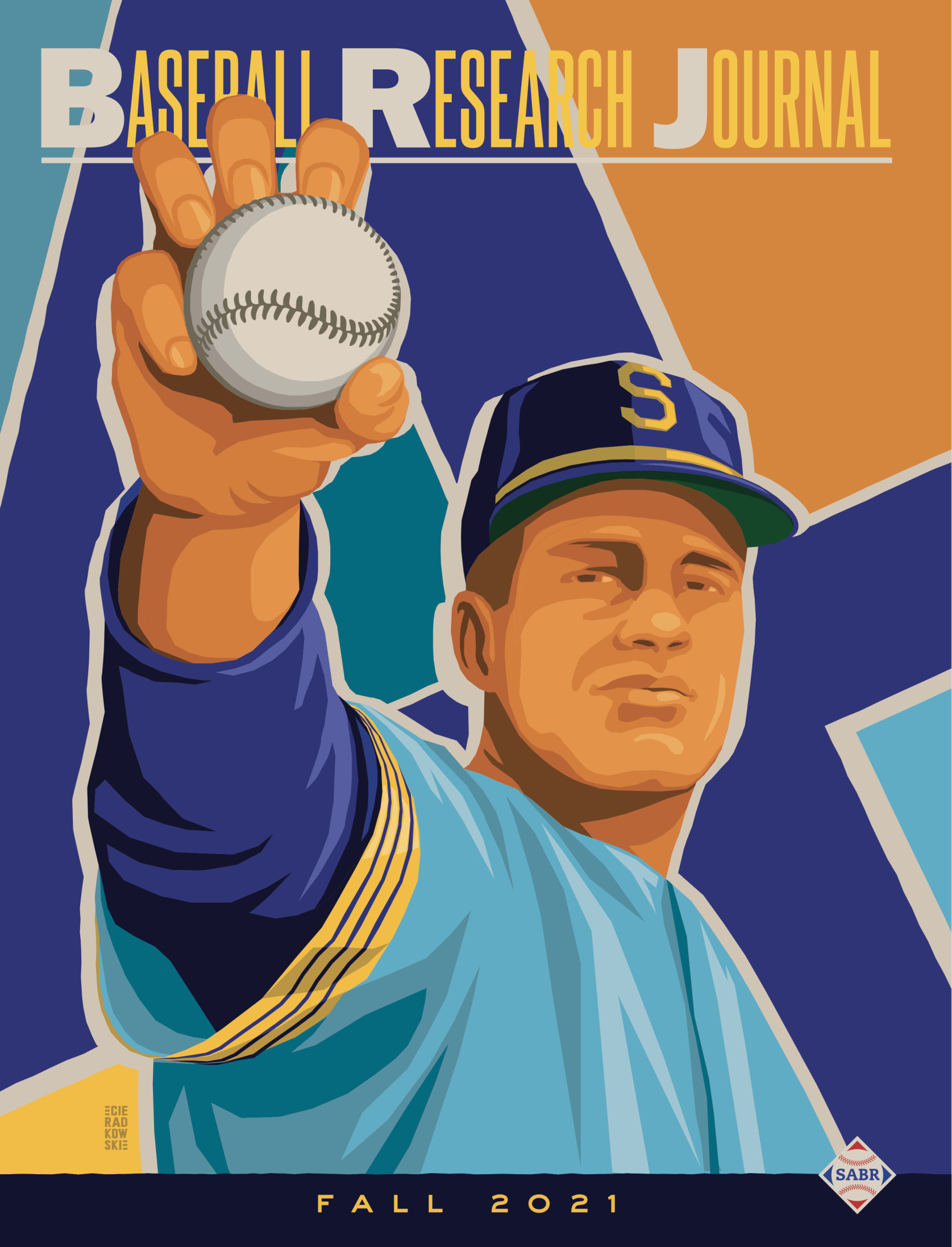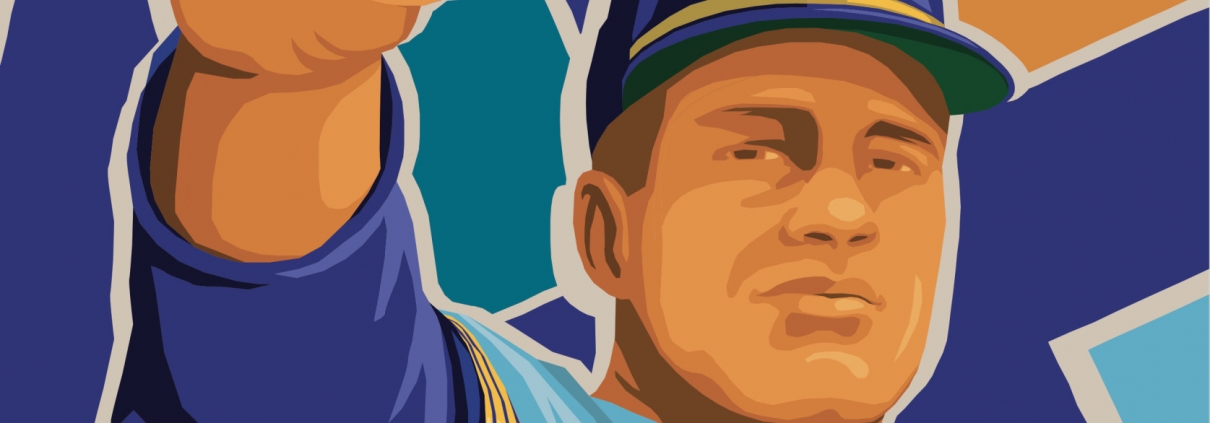Editor’s Note: Fall 2021 Baseball Research Journal
This article was written by Cecilia Tan
This article was published in Fall 2021 Baseball Research Journal
 With an original cover illustration of Jim Bouton designed by SABR member Gary Cieradkowski, we hope you enjoy the new issue of the Baseball Research Journal!
With an original cover illustration of Jim Bouton designed by SABR member Gary Cieradkowski, we hope you enjoy the new issue of the Baseball Research Journal!
By the time you read this, the 2021 World Series champion will have been crowned. But right up to the morning of game 161 the possibility of a four-way tie in the American League still loomed. In the end, none of the wacky tie-breaking scenarios came to pass. At best, what “didn’t happen” is relegated to a footnote on the season, while what did actually occur is, naturally, what will be principally recorded and remembered.
But I still like to think about “what if.” Part of the fun of baseball is the anticipation, the prediction of what might happen at each step of the game. Dreaming of “what if” is baked into the way many of us participate in the game as spectators: what if the batter hits a home run? what if the relief pitcher comes in, throws one pitch, and gets the groundball double play that snuffs the rally? It could happen.
It’s one reason I like to keep score when I’m at the game: so I can look down at my scorecard and predict what might happen. Like one day when Bill Nowlin and I were at a game at Fenway to work the SABR Boston community table. The year was 2006, and David Ortiz’s reputation for walk-off hits had already been established, but hadn’t yet grown to legendary proportions. The Red Sox went into the ninth inning down two runs. The scorecard showed that if two men got on and two men made out, Ortiz would get a chance to bat. I pointed this out to Bill. In those days, shortly after the Red Sox had won the championship in 2004, old-school Red Sox fans were still slow to shed their pessimistic ways. Bill was skeptical. Me, though, being a transplanted Yankees fan? I am optimistic by nature. I nudged him. “Just think. It could happen.”
And it did. Big Papi hit a three-run walk-off homer, beating the Texas Rangers, 5–4. We call those moments “magic” because it feels like we willed it to happen, like prayers were answered, like a miracle occurred. The magic of sports is that the game creates these moments, and some of them pan out. We didn’t get any of the tiebreaker scenarios for a game 163, but Aaron Judge did have the very first walk-off hit of his career to break a 0–0 tie in the bottom of the ninth inning to prevent it. He picked a good time for it … because of course he didn’t pick the time at all.
This is why I don’t believe sabermetrics or analytics takes the romance out of the game. Sure, we can analyze and make predictions all we want. But no spreadsheet can tell you whether David Ortiz was going to hit a home run or strike out in the bottom of the ninth on June 11, 2006. No formula can calculate whether Tyler Wade was going to trip and fall or slide home safely on October 3, 2021. No machine-learning algorithm can tell us if Cody Bellinger (or his father) is going to rob a homer. What analytics can do for the average fan (or broadcaster) is help understand the context that the action takes place in, and to anticipate the action.
But the action is still the action. Sometimes the outcome will be what we expect. Other times, it’ll be what we only dared to hope for.
Dare to hope, my friends. Hope for the chance for your team’s slugger to turn the tide with one swing, whether literally or as a metaphor. And I hope you enjoy this issue of the BRJ, which is larger than usual — because so many SABR members are producing quality research that a backlog is forming.
Maybe many folks had extra time on their hands during quarantine, but I feel one reason submissions are up is that we are in a golden age for research, whether one is looking back at history or forward through predictions. The Newspapers.com benefit of SABR membership (accessible to all members through SABR.org) has borne fruit, as have the continued expansions of online accessible libraries and resources. Many of us now have more computing power in our pockets than a university computer science department had just a few decades ago. Perhaps most importantly, though, we have so many ways to connect with other researchers, to bounce ideas, refine techniques, find leads and lost gems, and to support each other. All these elements add to the mix.
And SABR members are not going to run out of topics to research any time soon. You inspire me, each and every one.
To learn more about contributing to a future SABR publication, click here.
— Cecilia M. Tan
SABR Publications Director
Related links:


